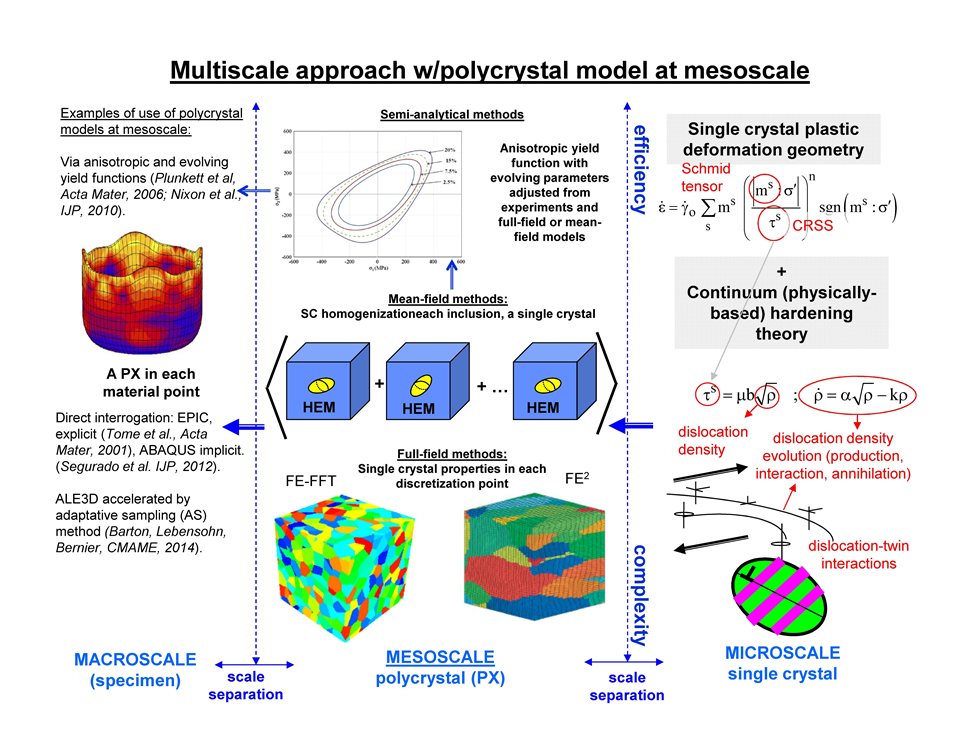Microstructure-based Forming Simulation Tools for Face-centered Cubic and Hexagonal Close-packed Metals and Alloys
This capability is based on Los Alamos National Laboratory’s unique, multiscale, crystal plasticity expertise used for developing and using physically based and experimentally validated, constitutive, polycrystal (PX) models. This capability recently expanded to include finite element (FE) implementations for thermomechanical processing routes, such as metal forming applications. LANL can deliver forming limit diagrams (FLD), anisotropic yield functions, Lankford coefficients, and fully coupled FE-PX codes for microstructure-sensitive, metal-forming predictions and simulations, which includes: PX codes (visco-plastic self-consistent [VPSC]) implemented as an ABAQUS UMAT [1], VPSC coupled with forming limit diagrams (FLD) by a collaborator at the National Institute of Standards and Technology (NIST) [2], and VPSC applied to improve formability of Al-alloy sheets for packaging [3].
Unique Aspects
Numerous research and development groups worldwide currently use LANL polycrystal plasticity codes for parameter identification, experimental results interpretation, and multiscale calculations.
Availability
Availability of these microstructure-based tools can be facilitated anytime through the capability experts.
References
- J. Segurado, R.A. Lebensohn, J. LLorca and C.N. Tomé, Int. J. Plast. 28, pp. 124-140 (2012).
- Y. Jeong (NIST) https://github.com/youngung.
- O. Engler (Hydro Aluminum R&D Bonn, Germany), Mat. Sci. Eng. A 538 (2012) 69.
